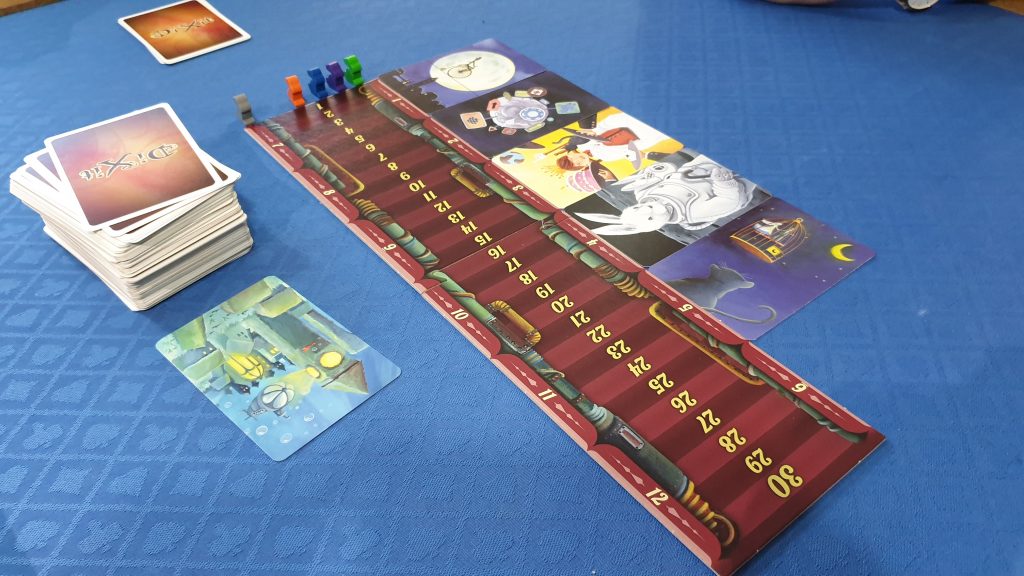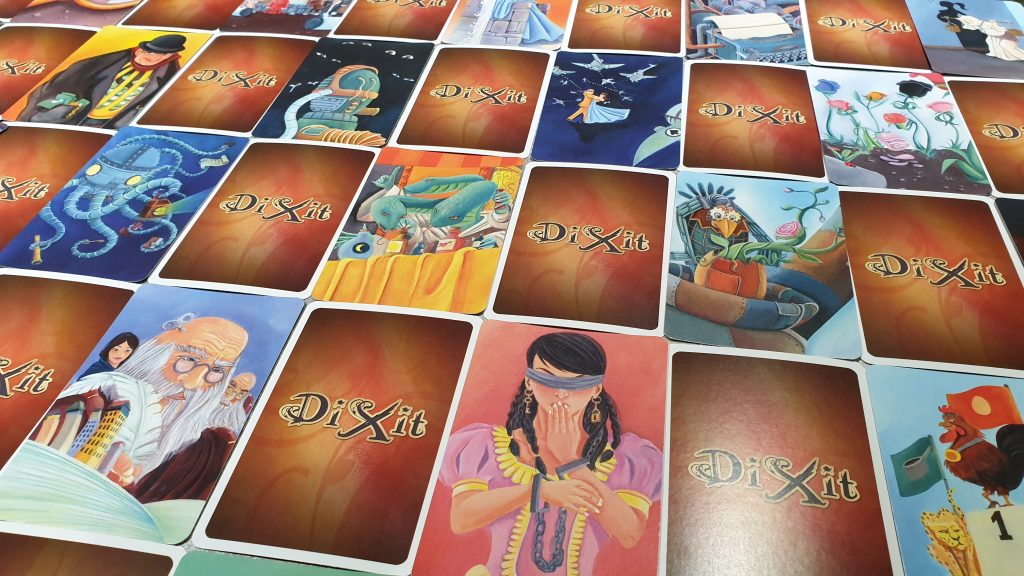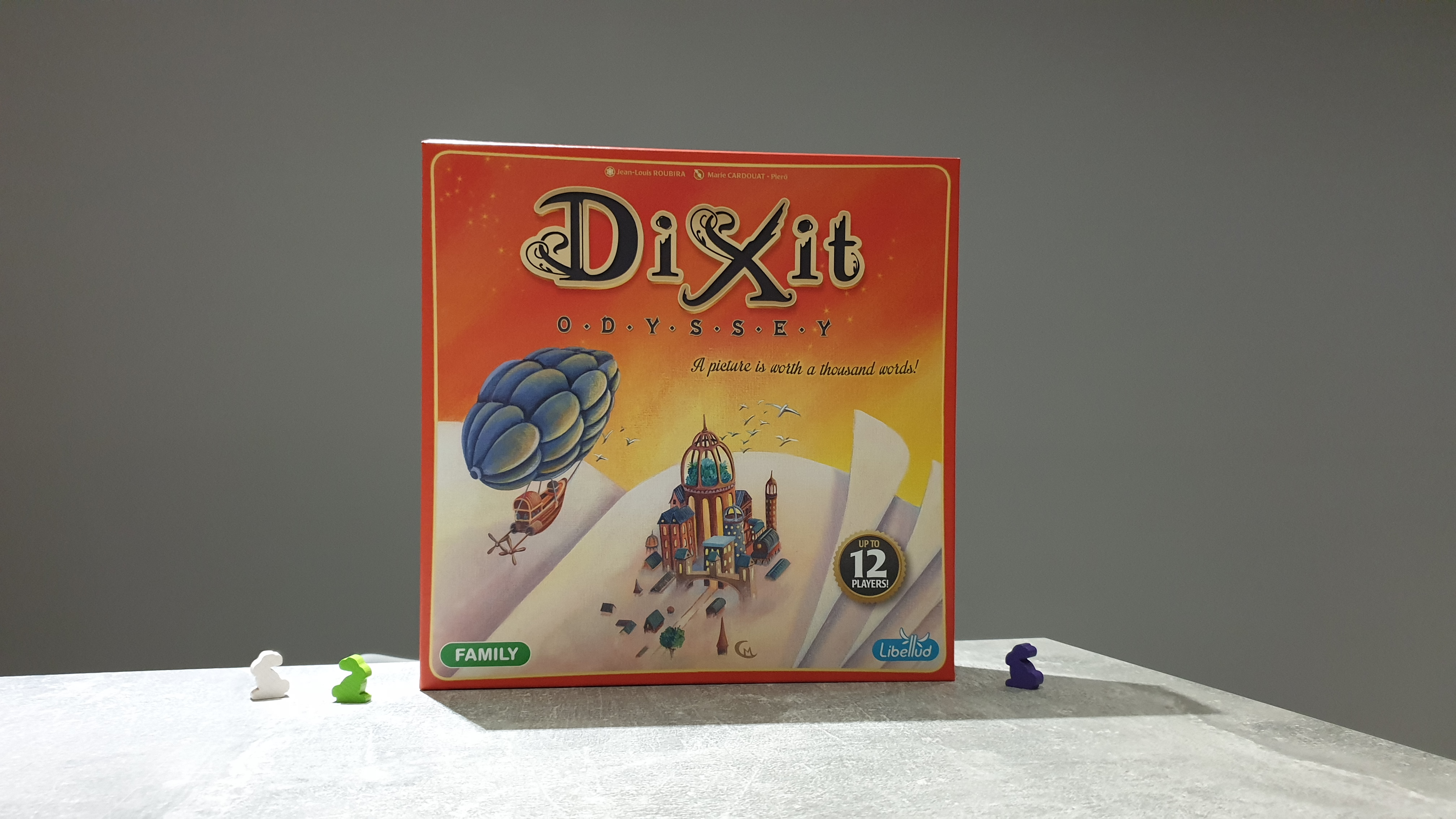Dixit: Odyssey is an expansion for the much loved art filled game Dixit, or standalone title which is the version featured in this review. Designed byJean-Louis Roubira, and published by Libellud, the title features a ton of artwork from Marie Cardouat and Pierô. Taking around 30 minutes to play, the standalone version accommodates for 3 – 12 players. Throughout the game art will be used, words or sounds will be used to hint and bunnies will hop. However, is this good for new or current Dixit players? Let’s find out!
Here is a brief overview of the game, though for those unaware of Dixit check out our review of the base game for more details. The game revolves around the deck of cards. Each player gets 6 cards, each featuring unique artwork. On a turn the active player will play a card facedown – saying a word/phrase or making a noise. All other players add a single card from their hand into the middle that they believe matches what the active player said. These cards are then shuffled and placed out into numbered slots.
Players vote which they believe was the active players card. This is the first change in the standalone box as numbered tokens are not used. Instead, a board and peg system is implemented to secretly vote with. These selection boards are a little fiddly at first, but no more so than having a pile of number tokens. For going up to 12 players it means players do not have 12 tokens to sort through to vote with. Points are awarded based on if the right card is chosen with players gaining bonus points if their card is picked by mistake. Play continues until one player reaches 30 points – with them crowned the winner.

Different ways to play are included. With 7 and more players instead of voting on just one card you can choose to vote on two cards. However, less points are awarded if you choose the correct image – meaning players can decide whether they are certain or not. There is also a Dixit Party mode for 6+ players. In this the storyteller role of the active player is changed up. Even the active player is finding the best card in this mode. Players vote with two different coloured pegs, aiming to find the active players card with the red peg and the most popular voted one with their green peg. This breaks away from the usual Dixit mold nicely and it is a shame that the experience doesn’t work quite as well with less than 6 players.
Coming in the box regardless of which version you go for are 84 brand new cards. Interestingly, whilst drawn by Pierô the artwork was colored by Marie Cardouat – the artist of the original Dixit – so they have a similar vibe. Full of wonderful, glorious artwork each is unique. Whether it is peculiar blimp or or a dragon in a desert they all have their own character. This isn’t to say the small elements, the quirky features, don’t work together. The features still allow for just enough crossover that you can never quite be certain which the right card is.
The voting peg board aside there is one component change that seems small but is certainly noteable. Along the side of the scoreboard are numbers 1 – 12. These are to align the cards from players up against for use in voting. With the base game I often resorted to using unused player tokens – something that worked well. It is nice to see this incorporated into the side of the board, showing that the developers thought about how the product was being used. One odd aspect of the production is that the rabbits included in the standalone Dixit Odyssey are smaller than the original base game. They aren’t too small, so aren’t fiddly. It is probably done to make sure they all fit on the scoreboard and is just a weird difference.

Some players dislike being put on the spot. Being the active player and choosing a card and word combination can make some initially uncomfortable. If you can get a higher player count then Dixit party is your answer. It takes away the awkwardness of coming up with something related to a card on the spot. The normal mode does help as they’d only be in the spotlight once or twice a game. Alas, for players that like that aspect it comes around too infrequently as the player count rises. There’s no real way to fix this. So, although the standalone version comes with the ability to play with up to 12 players I’d probably still stick the 4 – 7 zone.
If you have the original base game it makes it slightly harder to recommend Odyssey as a standalone title. You’ll already have the components for up to six, a scoreboard and roughly enough room to put an expansion in the box. Still, the scoreboard is an improvement with the numbers for cards along the side. The box more naturally accommodates expansions. There are slots in the insert for at least 2 expansion decks. As a box to start off your Dixit experience Odyssey pips the original to getting on the shelf. Apart from the card art being different you are getting all of the same game content and more. For me the original Dixit and 10th anniversary decks now live in Dixit Odyssey’s box, which is firmly staying on my shelf!
[Editor’s Note: Dixit Odyssey was provided to us by Asmodee for review purposes. As a standalone game it is currently available on 365 Games for £27.99. It is also available from local board game stores, find your local store here]

